
|
Olympus E-10: Long Exposures and High ISO Settings |

| My other articles related to the Olympus E-10 and E-20 cameras |
|
Taking a picture of your lens cap seen from the inside may be quite educational, but does not say more about how the real pictures of real objects will be affected by the CCD noise. Here is a number of tabletop samples, shot at shutter speeds of 1 and 8 seconds at ISO 80, 160, and 320; no in-camera postprocessing ("Low/Soft" settings). When scrutinizing the samples, remember that in an 8x10-inch (20x25 cm) print each of them will be just 1.14" (29 mm) tall, therefore all noise effects will be reduced in size compared to what you are seeing on your monitor. The whole frame, (1 second, ISO 80, reduced and re-sharpened), is shown at the right, while 1:1 samples follow below. | ||
|
The scene was lit with evening daylight from a window facing East. The amount of light was adjusted as needed with window blinds. The pictures were taken in the shutter priority or metered manual mode, following the ESP matrix metering (with F-stop varying from 2.8 to 11 as needed). All pictures were saved as full-resolution, low-compression JPEGs, and the cropped samples were resaved at a very low JPEG compression as well. The samples were left unmodified. |

| |
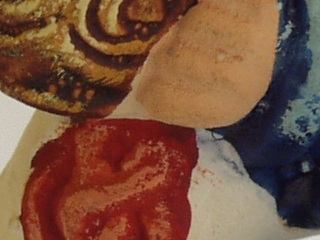
|

| |
| 1s, ISO 80 | 8s, ISO 80 | |
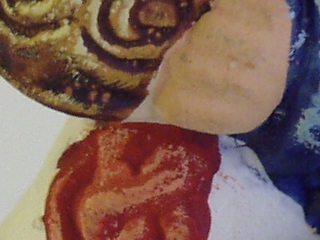
|
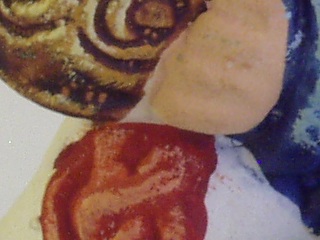
| |
| 1s, ISO 160 | 8s, ISO 160 | |
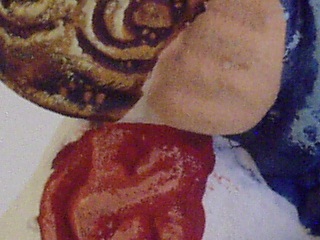
|
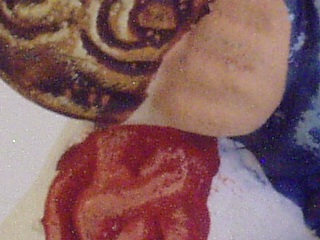
| |
| 1s, ISO 320 | 8s, ISO 320 | |
|
First of all, color and contrast hold OK at any exposure. A very respectable job. Obviously, the CCD noise (or film grain) will be most visible in smooth and/or dark areas, like the red patch at the left, or the dark blue jacket at the right. Having that in mind, let us have a closer look. The results at 1s and ISO 80 are very satisfactory. I tend to agree with the reviewers who say that no camera below $5000 matches (at the time of this writing, that is) the low-light performance of the E-10. Even at 8s (ISO 80) I'm hard pressed to detect visually any noise in the possible problem areas. Surprisingly, higher ISO settings seem to be more serviceable than some reviews would suggest. For one-second exposures there seems to be no visible image degradation at ISO 160, and at ISO 320 the noise, although already visible, still does not ruin the picture. Certainly, after going through this comparison I'm no longer afraid to use the ISO 320 setting in low-light photography of moving subjects. Eight-second exposures at ISO 320 are, however, barely usable. The noise even seems to be adversely affecting color saturation and contrast in the last sample. Still, we are talking about 8 seconds at ISO 320! | ||

| My other articles related to the Olympus E-10 and E-20 cameras |
| Home: wrotniak.net | Search this site | Change font size |
| Posted 2000/12/11; last updated 2003/03/16 | Copyright © 2000-2003 by J. Andrzej Wrotniak |